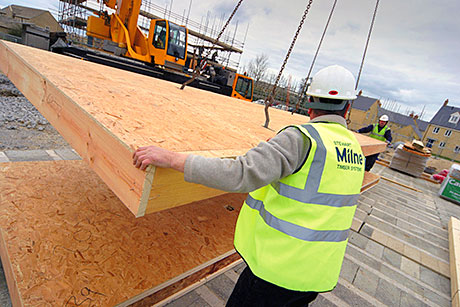
A brick shortage across Britain is encouraging more housebuilders to use timber frame, according to Stewart Milne Timber Systems.
The shortage, brought on by a vastly decreased manufacturing base, has resulted in lead times rising to four months in some cases. According to figures released by the Department for Business, Innovation and Skills, brick production is now half of what it was at its height in 2000, and the recent rise in demand for new-builds is making the situation worse.
Timber frame could be the solution, says Stewart Milne, with shorter lead times and enhanced speed of build. Timber frame can be manufactured off-site, which cuts lead times to as little as three weeks.
Alex Goodfellow, group managing director of Stewart Milne Timber Systems, says: “Timber allows developers to get projects completed on time and increase build programmes. It also saves on construction costs, while shortening the time it takes to realise a return on investment.”
Just 10 per cent of new-builds in England and Wales are built using timber frame, compared to 70 per cent in Scotland.
Apart from increasing the speed of build, timber frame reduces the need for additional labour, requires less work at height, and is more cost-effective. It is also a highly sustainable material, and has the lowest embodied carbon of any commercially available building material. This can improve energy efficiency by 20 to 33 per cent, depending on the size and type of structure.
Timber frames make achieving maximum air-tightness, U-values and thermal bridging easier, while innovation in design now means products such as the Sigma II Build System can support structures of up to six storeys, increasing the proportion of the market able to capitalise on the benefits of using timber frame.









